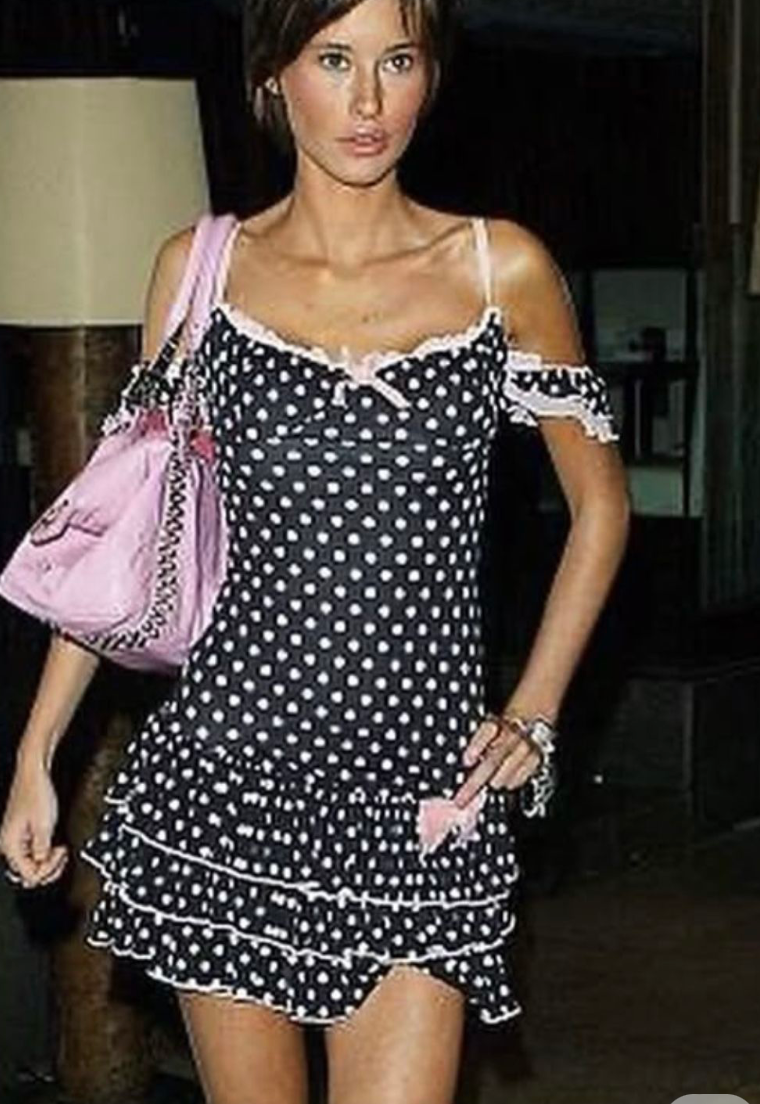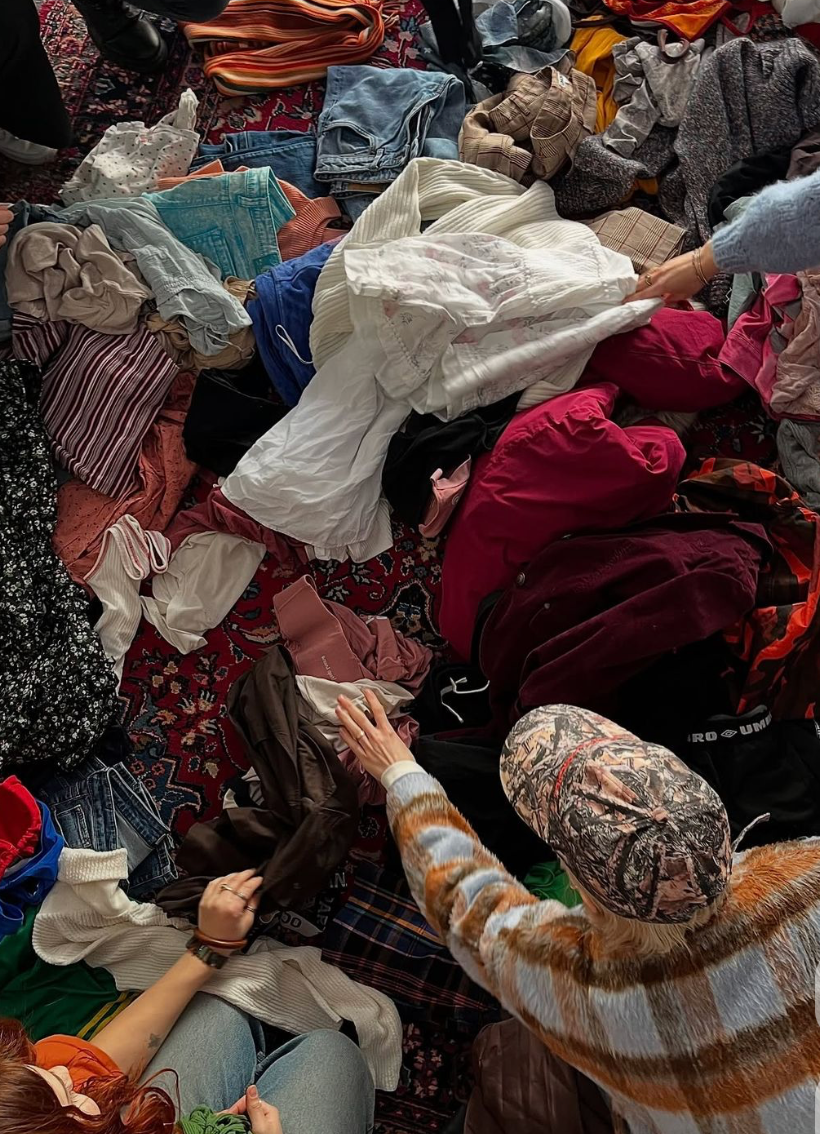Retro Reloaded: Why We Keep Buying the Past
Written by Galilea Matus
Take a stroll through the city and look at people around you. What are they wearing? Zebra print? Patchwork jeans? Chokers? Probably not. More likely, you’ve noticed the arrays of polka dots. It’s true - polka dots are making a comeback in the twenty-first century. Although social media plays a major role in this trend–especially through influencers and celebrities–a deep reason will always be society's love of nostalgia. So what better symbol to bring back than a pattern that was trending back in the ‘90s and Y2K eras?
Polka dots aren’t just appearing among teenagers and young adults fashion - they’ve reinvented themselves to fit on runways and home decor. Although they’re being worn in similar ways to how celebrities have worn them in the past, such as Britney Spears in several late -90s and early 2000s photoshoots and performances, and Christina Aguilera in her Genie in a Bottle era; it’s clear that polka dots are being reinvented in all forms. From micro-sized, sleek styles to oversized, colorful silhouettes, polka dots are making a comeback, not only due to social media, but also because of the desire to relive the “olden days.”
But doesn’t this sound familiar? It’s been seen before. Yes, maybe it was a different pattern, or fabric, or aesthetic, but companies love comebacks. Many fashion brands now produce “micro-season” collections on a weekly or monthly basis, flooding the market with countless trendy products. In reality, these pieces become outdated as quickly as they appear. It’s an unhealthy cycle, and most of us don’t realize that we’re in it until we’re getting rid of clothes quicker than we are buying it - simply because they aren’t “cute” or “in” anymore.
Take Shein, a global e-commerce fash-fashion platform for example: this company adds an average of 6,000 new “stylish items” per day. Looking at how many people buy from Shein on a monthly basis, the amount of unnecessary clothing waste-specifically 92 million tons/year-becomes substantially high. It’s also important to remember that Shein is just among one of millions of fast-fashion companies . It’s a reminder that fashion’s constant trend switches aren’t always creativity - just consumerism in disguise.
Next time you go shopping, take a moment to ask yourself; Why do I want to buy this? Do you truly love the piece, or do you like the validation it brings? There’s nothing wrong with buying popular fashion pieces - the real issue lies in the overconsumption that fast fashion promotes. Purchase that polka dot shirt, or leopard print pant, or chunky ring if it truly resonates with you. Choose pieces that reflect your personal style, not ones that you buy just to be who you once were or to fit in with your community or social media trends.
Edited by Polly Drebin, Ava Palmieri, Claudia Rothberg and Isabella Zapata
Sources:
Fast, Cheap, and Out of Control: Inside Shein’s Sudden Rise Inside Shein’s Sudden Rise: Fast, Cheap, and Out of Control | WIRED
10 Concerning Fast Fashion Waste Statistics 10 Concerning Fast Fashion Waste Statistics | Earth.Org




